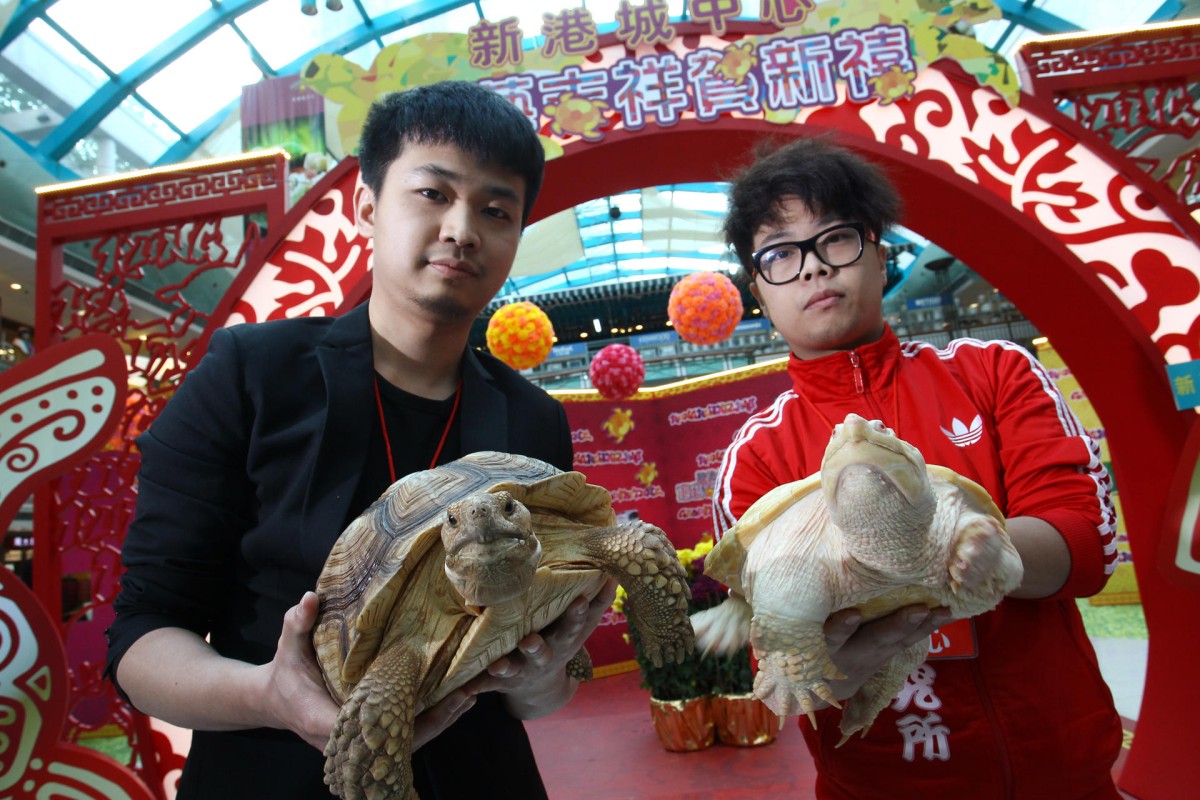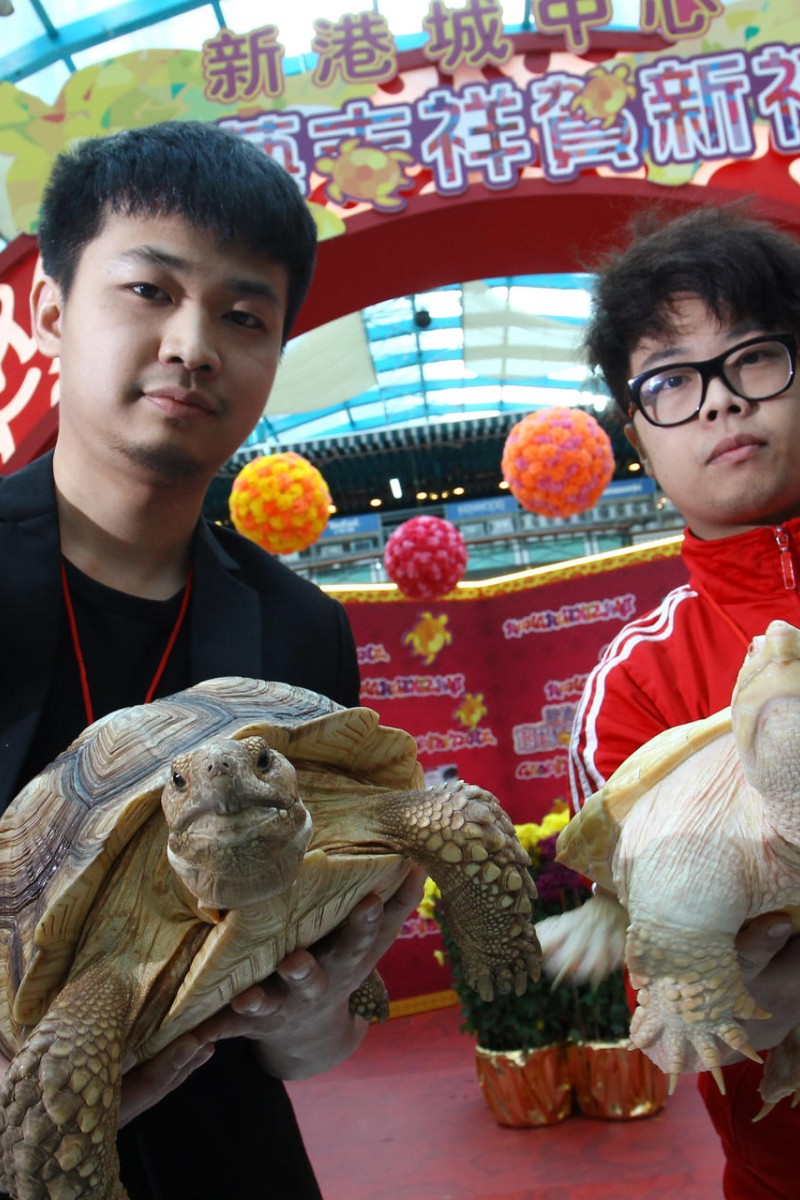 Alan Chan (left) and Chan Wai-kit show off two turtles, including the rare Albino
Alan Chan (left) and Chan Wai-kit show off two turtles, including the rare Albino The "Snapping Turtle Brothers" have shelled out some serious money on their collection of more than 60 turtles.
Alan Chan Wai-lun and his little brother Chan Wai-kit bonded over a love of the reptiles. Alan fell in love with the creatures when he bought his first one from a wet market.
"I had just started primary school when I got my first turtle," he says. "My little brother became interested in them because of me. Keeping turtles is a way for us to communicate."
But they don't come cheap. Alan paid HK$50,000 for a rare albino turtle three years ago. The albino northern common snapping turtle is the highlight of his collection. But it took some work to buy.
"I wanted an albino turtle from a breeder in the US. I asked a turtle trader in Singapore to help me contact a host on the Discovery Channel to help me get the turtle," he says. "The farm wouldn't deal directly with buyers. They only sell to people with connections."
Albino turtles can be hard to come by. It can take breeders many years to breed the rare species.
"There are also many risks. The turtles may suffer from injury or be unable to breed," he says. "The supply of albino turtles remains limited, even though breeders have mastered the techniques to breed them."
The problem is, even when a male and a female albino turtle have a baby turtle together, it might not be an albino. The albino turtle is so popular because of its colour. Although Alan paid a small fortune for his, today they are even more expensive.
"Mainlanders, especially businessmen, love the gold and yellow colour of albino turtles," he says. "I expect the demand and price of albino turtles to continue to go up. I don't plan to sell it, but my turtle is worth more than HK$100,000 these days."
Alan sees himself more as a collector than a pet owner. And like all collectors, he likes nothing more than showing off his collection. That's why he accepted an invitation from a shopping mall to host a turtle exhibition.
"I hope visitors will enjoy looking at my pets, and also learn about caring for animals," he says.
Although turtles seem like a perfect pet for people living in small Hong Kong flats, Alan warns that this isn't always the case.
"Turtles are quiet, they don't eat much and they don't move around a lot. But they do grow really quickly. I cannot tell you how many irresponsible turtle owners dumped their pets at pools in the park because they grew too big," he says.
"People should learn more about the long-term responsibilities of keeping a turtle before buying. They are tiny when you get them from the pet shop, but they soon need a lot more space. People can't just abandon them."
Alan loves turtles, but his job as a Chinese medicine trader means he often has to deal in medicines made from the creatures. So he makes sure he separates his passion from his work. "I have no hard feelings when handling medicine made from turtle shells," he says. "It is part of my job."
Alan's turtles are on display at an exhibition at Sunshine City in Ma On Shan which runs until Sunday
